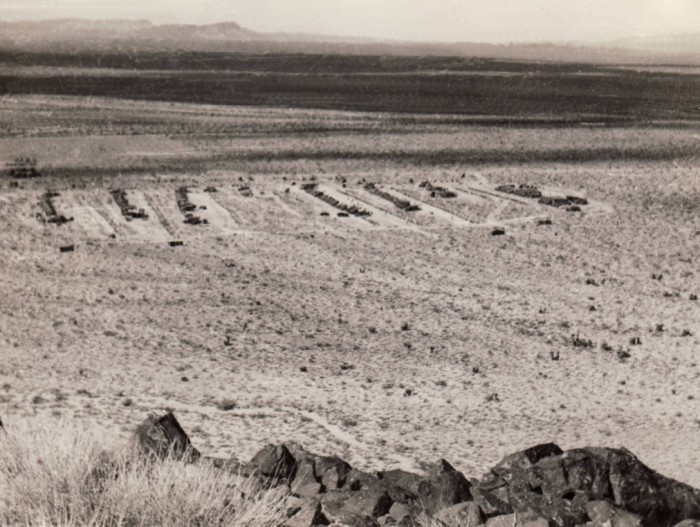.jpg)
south of Goffs, near the base of Goffs Butte in T9N, R18E, section 10. The exact location of Goffs Campsite cannot be determined, but it could lie on either side of the railroad, east of the former railhead area. Another area associated with the campsite is located about 1 mile east of Goffs, but its exact whereabouts could not be determined.
SITE HISTORY: In January 1942, the success of the German Army in North Africa led the U.S. War Department to focus U.S. Army training in areas with a desert terrain and environment. On 5 February 1942, the Chief of Staff, General Headquarters, approved of a Desert Training center and designated Major General George S. Patton as the Center's Commanding General. The total maneuver area encompassed 12 million acres in Southern California and Western Arizona, making it the largest training area in the U.S. Close to one million troops trained in the area between 1942 and 1944.
Within the organization of the Desert Training Center, Camp Goffs is not listed as one of the divisional camps. However, according to local historian and land owner, Dennis Casebier, the entire 7th Infantry Division, consisting of 15,000 troops, trained at this location. In 1942, the War Department acquired, through five leases, approximately 426 acres for Goffs Campsite. The lease documents and maps of the site could not be located; however, they were numbered:

.jpg)
.jpg)
.jpg)
